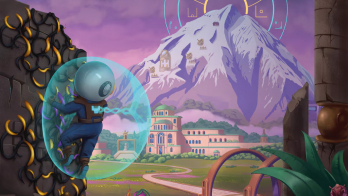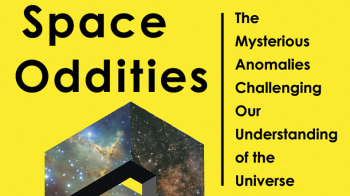New Challenges and Opportunities in Physics Education, edited by Marilena Streit-Bianchi, Marisa Michelini, Walter Bonivento and Matteo Tuveri, Springer

New Challenges and Opportunities in Physics Education presents itself as a guidebook for high-school physics educators who are navigating modern challenges in physics education. But whether you’re teaching the next generation of physicists, exploring the particles of the universe, or simply interested in the evolution of physics education, this book promises valuable insights. It doesn’t aim to cater to all equally, but rather to offer a spark of inspiration to a broad spectrum of readers.
The book is structured in two distinctive sections on modern physics topics and the latest information and communication technologies (ICTs) for classrooms. The editors bring together a diverse blend of expertise in modern physics, physics education and interdisciplinary approaches. Marilena Streit-Bianchi and Walter Bonivento are well known names in high-energy physics, with long and successful careers at CERN. In parallel, Marisa Michelini and Matteo Tuveri are pushing the limits of physics education with modern educational approaches and contemporary topics. All four are committed to making physics education engaging and relevant to today’s students.
The first part presents the core concepts of contemporary physics through a variety of narrative techniques, from historical recounting to imaginary dialogues, providing educators with a toolbox of resources to engage students in various learning scenarios. Does the teacher want to “flip the classroom” and assign some reading? They can read about the scientific contributions of Enrico Fermi by Salvatore Esposito. Does the teacher want to encourage discussions? Mariano Cadoni and Mauro Dorato have got their back with a unique piece “Gravity between Physics and Philosophy”, which can support interdisciplinary classroom discussions.
The second half of the book starts with an overview of ICT resources and classical physics examples on how to use them in a classroom setting. The authors then explore the skills that teachers and students need to effectively use ICTs. The transition to ICT feels a bit too long, and the book struggles to weave the two sections into a cohesive narrative, but the second half nevertheless captures the title of the book perfectly – ICTs are the epitome of new opportunities in physics education. While much has been said about them in other works, this book offers a cherry-picked but well rounded collection of ideas for enhancing educational experiences.
The authors not only emphasise modern physics and technology, but also another a very important characteristic of modern science: collaboration. This is an important message that we need to convey to students, as mere historical examples from classical physics sometimes show an elitist view of physics. Lone-genius narratives are often explicitly transitioned to a collaborative understanding of breakthroughs.
The book would not be complete without input from actual teachers. One notable contribution is by Michael Gregory, a particle-physics educator who shares his experiences with distance learning together with Steve Goldfarb, the former IPPOG co-chair. During the pandemic, he used online tools to convey physics concepts not only to his own students, but to students and teachers around the world. As such, his successful virtual science camps and online particle-physics courses reached frequently overlooked audiences in remote locations.
Overall, New Challenges and Opportunities in Physics Education emerges as a valuable resource for a diverse audience. It is a guidebook for educators searching for innovative strategies to spice up their physics teachings or to better weave modern science into their lessons. Although it might fall short of flawlessly joining the modern-physics content with educational elements in the second half, its value is undeniable. The first part, in particular, serves as a treasure trove not only for educators but also for science communicators and even particle physicists seeking to engage with the public, using the common ground of high-school physics knowledge.








